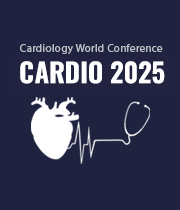Title : Unveiling the gut-heart axis in cardiac amyloidosis: A systematic review of emerging evidence
Abstract:
Background: Cardiac amyloidosis, particularly in its transthyretin (ATTR) and light-chain (AL) subtypes, is an underdiagnosed cause of heart failure with preserved ejection fraction. Emerging research suggests the gut microbiota may influence amyloidogenesis, systemic inflammation, and cardiac function. This systematic review explores the interplay between gut microbial composition and cardiac amyloidosis.
Methods: A systematic literature search was conducted in PubMed, Web of Science, and Scopus using combinations of the terms “amyloidosis,” “gut microbiota,” “cardiac,” and “dysbiosis.” Four human studies met inclusion criteria. Data were extracted on microbiota composition, cardiac phenotype, and mechanistic pathways.
Results: Across subtypes, dysbiosis was a consistent feature. In hereditary ATTRv amyloidosis, Chen et al. observed increased microbial richness and α-diversity in patients with greater cardiac amyloid burden on Tc-PYP SPECT, with Clostridia taxa inversely correlating with neuropathy severity. Das et al. reported decreased Bifidobacterium and increased markers of oxidative stress in V142I fibroblast models. Vanhentenrijk et al. found that African-American p.V142I carriers had higher rates of heart failure and NT-proBNP levels, with indirect implications for microbiota-host interactions. In AL amyloidosis, Yan et al. demonstrated enrichment of Bifidobacterium and Akkermansia, and depletion of SCFA-producing Faecalibacterium; microbial signatures were significantly associated with cardiac biomarkers and treatment response.
Conclusion: Despite limited sample sizes, current data suggest a link between gut microbiota composition and cardiac amyloid disease activity, especially in AL and ATTRv subtypes. Specific taxa such as Clostridia, Bifidobacterium, and Akkermansia may mediate immune-metabolic interactions in amyloidosis. Further mechanistic and interventional studies are needed to evaluate the diagnostic and therapeutic potential of targeting the gut–heart axis in this condition.



